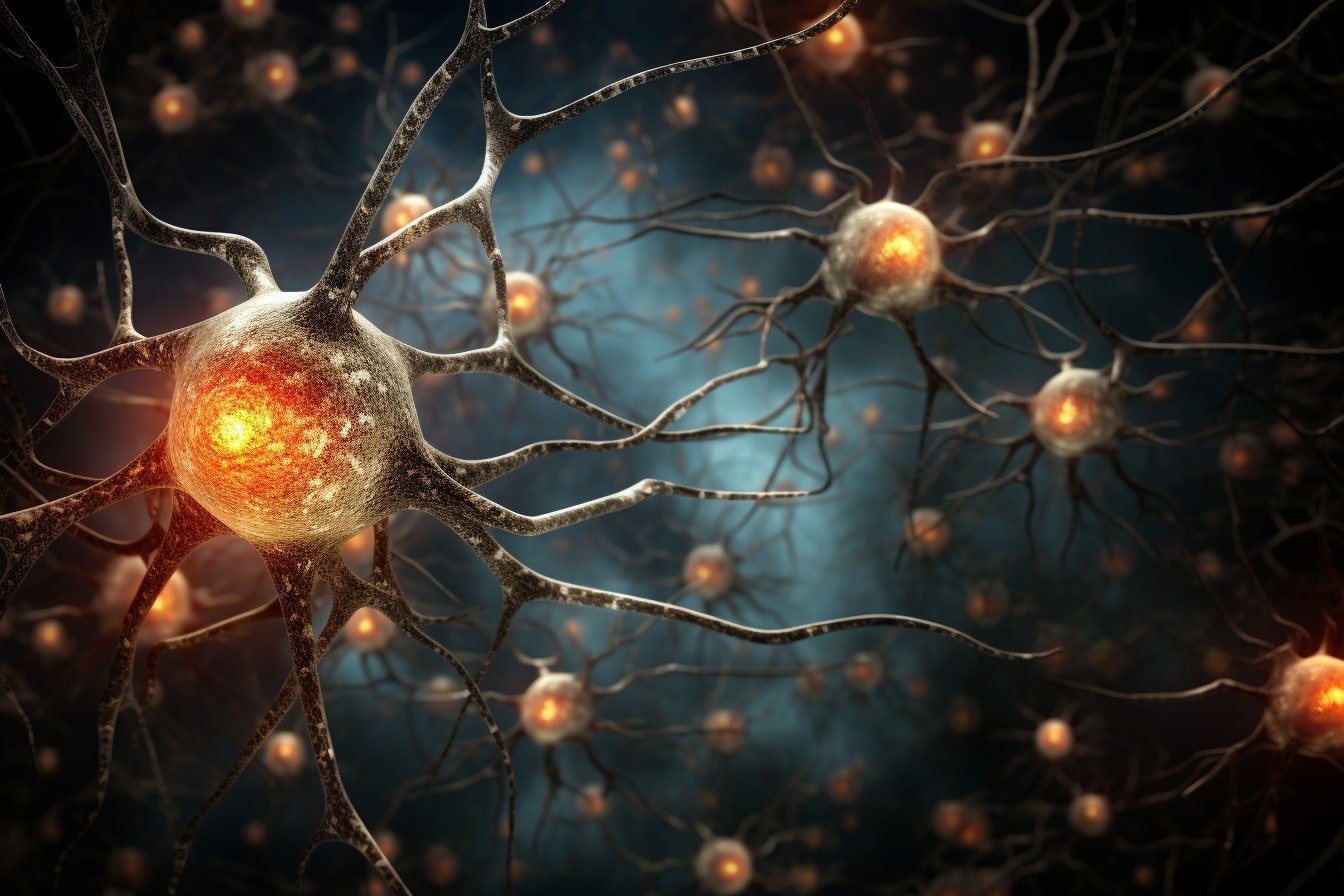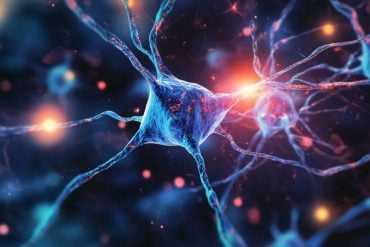Summary: Scientists discovered a potential new weapon in the battle against opioid use disorder (OUD), a condition that affects over two million people in the U.S. alone.
The drug, ADX106772, acts on metabotropic glutamate 2 receptors in the brain, leading to a reduction in oxycodone intake and drug-seeking behavior in an animal model. Crucially, ADX106772 does not impact the response to other rewards in the brain, avoiding potentially harmful side effects.
This promising development could offer a new avenue for treating OUD and reducing the devastating toll of opioid abuse and overdoses.
Key Facts:
- ADX106772, produced by Addex Therapeutics, can reduce oxycodone intake and drug-seeking behavior in an animal model without disturbing other reward responses.
- More than two million people in the U.S. suffer from OUD, with around 70,000 dying from opioid overdoses annually.
- This research opens the door to the possibility of using drugs that target the glutamate system as potential treatments for prescription opioid use disorder.
Source: Scripps Research Institute
Over the last decade, opioid abuse and overdoses have reached epidemic proportions in the United States.
Now, Scripps Research scientists show that a drug that activates metabotropic glutamate 2 receptors in the brain can reduce oxycodone intake and drug-seeking behavior in an animal model of opioid use disorder (OUD).

Importantly, the drug was able to reduce oxycodone intake and relapse without disrupting other reward responses in the brain, which could result in negative side effects.
The team published their findings on July 20, 2023, in the journal Neuropharmacology.
OUD is estimated to impact more than two million people in the U.S. alone, and more than 70,000 people die of opioid overdoses each year. Semi-synthetic opioids, such as oxycodone, are responsible for almost 20 percent of these deaths.
Current OUD treatments, such as methadone, buprenorphine and naltrexone are effective in the short-term, but many patients relapse, and better treatment options are urgently needed.
“Our research demonstrates that targeting the glutamate system with novel pharmacotherapies can stop oxycodone self-administration and seeking in preclinical models, which supports this approach as a future potential treatment for prescription opioid use disorder,” says study senior author Rémi Martin-Fardon, PhD, associate professor in the Department of Molecular Medicine at Scripps Research.
The therapeutic tested, ADX106772, is produced by Addex Therapeutics and works by activating the mGlu2 receptor. These receptors inhibit the release of glutamate and are expressed in brain regions associated with addiction.
“Drugs of abuse all illicit glutamate release in the brain,” says Jessica Illenberger, PhD, first author of the study and a postdoctoral research associate in the Martin-Fardon lab.
“By reducing the release of glutamate, our study was designed to thereby reduce the effects of the drug and withdrawal on the brain.”
Other drugs that work via similar mechanisms have been shown to effectively decrease the intake of other addictive substances—including cocaine, alcohol and nicotine—but this study is the first demonstration that this class of pharmaceuticals might also be effective in combatting opioid use.
To test whether ADX106772 could reduce opioid intake, the researchers first trained rats to self-administer oxycodone by pressing a lever.
The rats were also conditioned to associate an auditory and visual cue with oxycodone availability: When oxycodone was delivered, a light above the lever lit up while white noise played in the background.
Exposure to drug-associated stimuli is known to set off circuits in the brain that cause craving, so training the rats to associate these cues with oxycodone—analogous to drug paraphernalia—allowed the researchers to model how drug-seeking behavior and relapse are prompted by drug-associated cues.
Once the rats were dependent on oxycodone, the researchers tested whether administering ADX106772 reduced their oxycodone intake.
They found that ADX106772 significantly reduced self-administration of oxycodone for upwards of 12 hours. Higher doses of ADX106772 were associated with a faster onset of action.
The researchers also tested whether ADX106772 could help prevent relapse. To do this, they first induced abstinence by stopping access to oxycodone so when the rats pressed the lever, no oxycodone was administered and the light no longer lit up.
“When we take away both the oxycodone and the cue associated with it, the rat essentially learns there’s no reason to push the lever anymore,” says Illenberger.
“Just reintroducing the cue that was previously associated with the drug of abuse is powerful enough to get them to seek the drug and press the lever, even if there’s still no drug being delivered.”
However, when the rats received ADX106772, they were much less likely to display this drug-seeking behavior when reintroduced to the drug-associated cues, indicating that the therapeutic might be useful for both reducing oxycodone intake and preventing relapse.
To ensure that ADX106772’s effect was selective in reducing oxycodone intake, the researchers also tested whether it impacted the rats’ intake of a non-drug reward—sweetened condensed milk.
They found that ADX106772 did not affect the rats’ intake or seeking of sweetened condensed milk, indicating that its effects do not impact other natural reward systems.
“Whenever we’re looking at therapeutics for drug abuse, we want to make sure that the therapeutic is only reducing drug-seeking and not reducing the seeking of other things that the individual finds rewarding, like food or sex. This could cause other problems, such as depression,” says Illenberger.
Because opioid use disorder is characterized by drug craving that persists for a long time after abstinence, repeated or chronic treatment with ADX106772 may be necessary to prevent relapse in the long-term.
Though short-term treatment with ADX106772 did not impact food-seeking behavior, future studies are needed to test the potential effects of chronic treatment on off-target behaviors.
“Knowing that modulating the glutamergic system has be shown to successfully block nicotine, cocaine, and alcohol-motivated behaviors, our study strongly suggests that targeting mGlu2 receptors to decrease glutamate release could be an umbrella treatment for excessive drug use and relapse,” says Martin-Fardon.
In addition to Illenberger and Martin-Fardon, authors of the study “ADX106772, an mGlu 2 receptor positive allosteric modulator, selectively attenuates oxycodone taking and seeking,” include Francisco J. Flores-Ramirez, and Alessandra Matzeu of Scripps Research; and Robert Lütjens of Addex Pharmeceuticals.
Funding: This work was supported by funding from the National Institute of Health and National Institute of Alcohol Abuse and Alcoholism, and the National Institute on Drug Abuse (AA026999, AA028549, AA006420, T32AA007456, DA053443).
About this neuropharmacology and OUD research news
Author: Scripps Communications
Source: Scripps Research Institute
Contact: Scripps Communications – Scripps Research Institute
Image: The image is credited to Neuroscience News
Original Research: Open access.
“ADX106772, an mGlu2 receptor positive allosteric modulator, selectively attenuates oxycodone taking and seeking” by Rémi Martin-Fardon et al. Neuropharmacology
Abstract
ADX106772, an mGlu2 receptor positive allosteric modulator, selectively attenuates oxycodone taking and seeking
Opioid abuse and overdose have risen to epidemic proportions in the United States. Oxycodone is the most abused prescription opioid.
Treatments for opioid use disorder (OUD) seek to reduce vulnerability to relapse by reducing sources of reinforcement to seek drug (i.e., acute drug effects or drug withdrawal/craving).
Accumulating evidence that glutamate release elicits drug-seeking behaviors has generated interest in pharmacotherapies targeting the glutamate system. Agonists and positive allosteric modulators of the metabotropic glutamate 2 (mGlu2) receptor decrease glutamate activity, reducing drug taking and seeking.
The present study tested whether the mGlu2 receptor positive allosteric modulator ADX106772 reduces oxycodone self-administration and the conditioned reinstatement of oxycodone seeking without affecting behaviors directed toward a highly palatable nondrug reinforcer (sweetened condensed milk).
Male Wistar rats were trained to self-administer oxycodone (0.15 mg/kg/infusion, i.v., 12 h/day) or sweetened condensed milk (SCM; diluted 2:1 v/v in H2O, orally, 30 min/day) for 13 days in the presence of a contextual/discriminative stimulus (SD), and the ability of ADX106772 (0, 0.3, 1, 3 and-10 mg/kg, s. c.) to decrease self-administration was tested.
The rats then underwent extinction training, during which oxycodone, SCM, and the SD were withheld. After extinction, the ability of ADX106772 to prevent SD-induced conditioned reinstatement of oxycodone and SCM seeking was tested. ADX106772 reduced oxycodone self-administration and conditioned reinstatement without affecting SCM self-administration or conditioned reinstatement.
ADX106772 reduced oxycodone taking and seeking and did not affect the motivation for the palatable conventional reinforcer, SCM, suggesting that activating mGlu2 receptors with a positive allosteric modulator is a potential approach for prescription OUD treatment.






